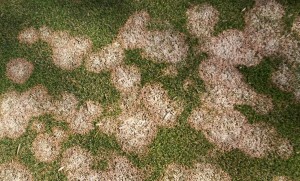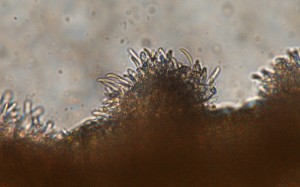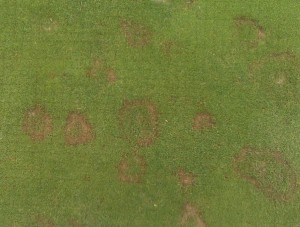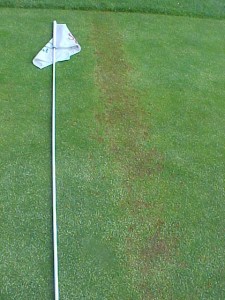If you are managing high value turf areas, like a golf course putting green, I hope you are watching the weather. By most accounts, we are in for some cold rain next week. High temperatures in the low 50s and a 90% chance of rain from Tuesday through Thursday are imminent. Crummy cycling weather, but perfect for pink snow mold!
After a long winter of snow and the accompanying flare-ups of gray snow mold on many residential sites, golf guys and pink snow mold are finally getting their due. The fungus that causes pink snow mold (aka: Fusarium patch), Microdochium nivale, does very well at temperatures between 45°F and 55ºF. Combine that with 48 to- 72 hours of wet weather and we have the perfect storm for disease outbreaks.
Recognize that, despite the common name, pink snow mold does not need snow to develop. Without snow, however, spring outbreaks are usually much less severe than those in the winter season. Typical symptoms include bronze rings and streaks of damaged turfgrass. Be aware that the fungus is a prolific spore producer, so be careful not to mow over active disease.
Watching the storm coming and thinking about the damage potential of pink snow mold, it might be prudent to protect high value turf areas from the disease with a well-timed fungicide application. Fungicide choices for this disease are many, so check out your options in Dr. Paul Vincelli’s recommendations from the University of Kentucky.
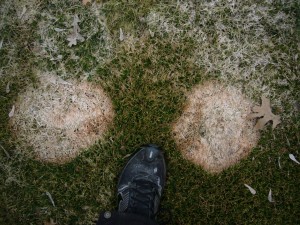
Microdochium conidia are very mobile. Pink snow mold “bleeds” from patches. Photo: Justin Bicek, North Oaks Golf Club
Last point, when making any fungicide applications, try to pick materials that give you the most bang for the buck. Other diseases are active at this time, but most importantly for golf course managers, there is evidence that beginning your dollar spot prevention programs at the second true mowing (about now) will minimize disease later in the season. Pick a material that will control pink snow mold as well as enhance your dollar spot program.
Yup, thought you had something to do this morning…
